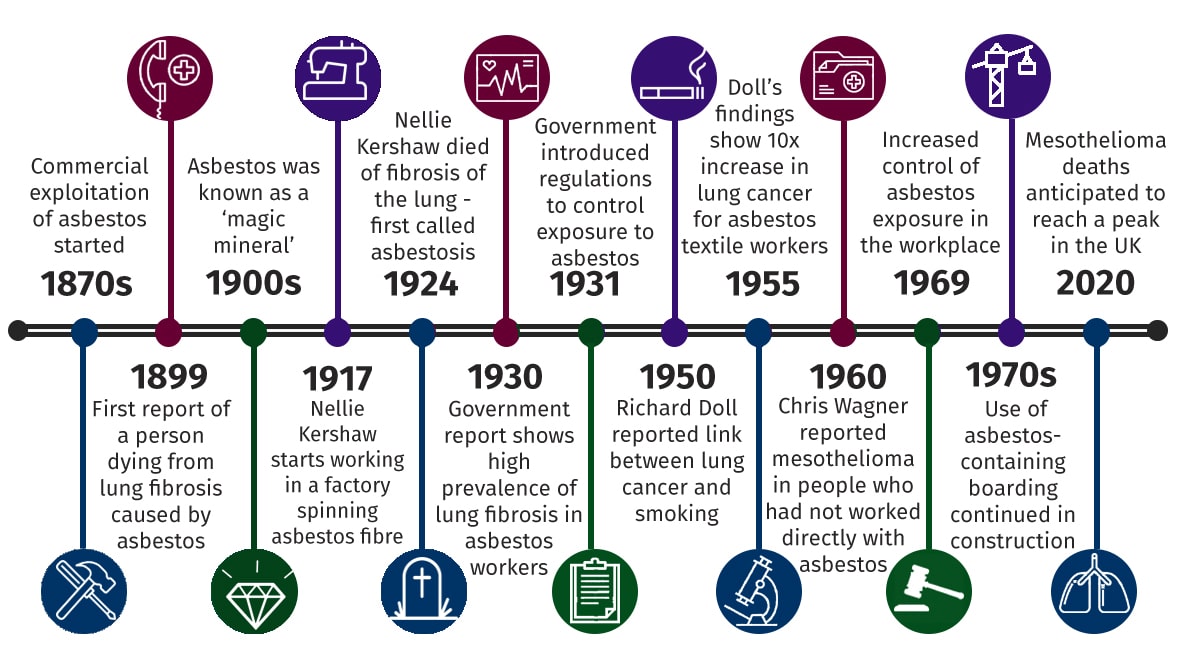How did a mineral as poisonous as asbestos end up becoming a key feature in so many building projects across the United States? And since its deadly properties to human health have been known for a long time, why did U.S. citizens have to wait for the early 2000s before something was done about this danger in their homes?
Every year, around 12,000 people die in the U.S. because of asbestos-related illnesses. In order to understand why asbestos has been the ‘hidden killer’ in homes for decades, we must first understand how its use first started.
The History of Asbestos
After a history that dates back to 4000 B.C., asbestos can still be found in every civilization in the world as a naturally occurring element.
Ancient civilizations discovered several properties that made asbestos an excellent resource for construction, military gear, and everyday use. Including:
- The mineral’s strength
- Cheap production
- Heat resistance
- Fire protection
- Water resistance
They expanded these properties for various uses, such as:
- Wrapping pharaohs in it to protect the body from decay.
- Producing clay pots with asbestos to increase heat resistance.
- Adding asbestos to textiles to strengthen them.
- Strengthening banknotes with asbestos fibers.
The Industrial Revolution
Following the discoveries of ancient civilizations, the Industrial Revolution in the 1800s triggered the widespread use of asbestos because it was considered an essential component in the construction industry.
Soon, asbestos mines opened worldwide. The cheap production of asbestos meant that mining this deadly mineral was a huge and profitable industry up until the 1970s. Unfortunately, it was also at this time that the use of asbestos expanded as a key component of insulation in almost every household built in this period.
Health Hazards Come to Light
With asbestos incorporated into so many homes, people began to develop symptoms of lung cancer and other similar deadly illnesses.
The first doctor to note the potential health hazards of this mineral was an Austrian doctor in 1897. However, his warnings were not taken seriously until more of his colleagues conducted their own research. In 1906, scientists from around the world finally came to the conclusion that contact with asbestos was linked to a high likelihood of death.
At the time, the United States was the biggest producer of this 'hidden killer' worldwide. The most common places where asbestos was found were:
- Landscapes
- Insulation
- Durable roads
- Military hardware
Finally, in the 1970s, organized trade and labor unions demanded a stop to the production and use of asbestos once it became clear that it was a leading cause of lung cancer.
Shockingly, it took until 2003 for major countries in the world to finally ban it from human production and remove it from the environment.
There is still no 100% ban on asbestos in the United States, meaning that homeowners and consumers need to pay special attention to what they purchase to avoid it in their lives entirely.
Can Asbestos Be Removed from Your Home?
Taking into consideration that there are still many homes in the U.S. that may have these deadly fibres somewhere in their structure, homeowners often wonder if they can be safely removed from their home.
The short answer is, yes.
However, it takes a team of experts and a lot of planning to safely remove asbestos from a house or building.
This is why specialized businesses like RidAway work with experts to plan the dangerous task of removal without creating any health hazards along the way.
Our professional contractors are state certified and licensed.
If you are worried that these fibres may be hiding somewhere in your home, give us a call today for a free consultation.

